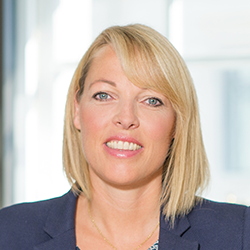
Social and environmental impact in the mid-market segment
Autor
Kristina Foster

Blogbeitrag
Social and environmental impact in the mid-market segment
Demand for real estate credit in the mid-market space (€15-120m) is strong across all borrower types, assets and geographies. This is due firstly to a decline in lending appetite from banks, who were once dominant lenders in this space, given regulatory and capital constraints, and secondly due to fewer transactions taking place, given the increase in overall borrowing costs. As such, demand for loans within the mid-market segment is being generated by owners seeking to refinance assets, which is typically every 5 years.
In terms of sustainability, most real estate investors have to date focused on energy performance certificates (EPCs), with minimum EPCs embedded as business-as-usual. A rise in the focus of sustainability in the mid-market sector, has however more recently been driven by more stringent regulation and greater investment activity of the larger real estate investors in the mid-market space. Impact investing, where the delivery of impact objectives is primary, and financial returns secondary, is a newer but growing theme in the real estate industry, which is being driven by larger real estate investors who have employed experts in this field. Best practice to deliver sustainable objectives typically centres around a scorecard which is used to assess and score the environmental, social, and governance credentials of both the asset and borrower, with a minimum threshold for investment. To deliver impact, lenders also need to demonstrate pre-define sustainable performance targets, which will drive positive change through smarter design of terms and conditions of the loan agreement.
While reporting for impact loans is more onerous, impact investing generates improvements in assets and communities which are attractive to investors and sponsors alike. In our view, there is greater demand for assets which deliver strongly on either sustainability or impact metrics, and this is a trend we believe is set to continue. The mid-market segment which was traditionally dominated by banks, has become more attractive to alternative lenders. Private equity funds, debt funds, and insurance companies have all increased their exposure to the mid-market space, attracted by the higher yields on offer and the ability to tailor loans to individual borrowers and assets.
The alternative lenders are also attractive to borrowers, as they can often get more flexible terms than they would with a bank loan. Private lenders are more willing to underwrite loans based on the specific characteristics of the asset and the borrower, rather than relying on a one-size-fits-all approach. This can be particularly beneficial for borrowers who have more complex financing needs, such as those looking to refinance existing debt or reposition an asset.
Despite the increased interest in the mid-market space, there are still challenges to be addressed. One of the biggest is the lack of standardization in loan documents and underwriting criteria. Unlike the large loan market, where there are standard documents and underwriting criteria that are widely accepted, the mid-market is much more fragmented. This can make it more difficult for lenders to compare different deals and for borrowers to understand ongoing deliverables and reporting requirements.
Another challenge is the lack of transparency in the mid-market. Unlike the public markets, where information is readily available and widely disseminated, the private mid-market space is much more opaque. This can make it more difficult for investors to get comfortable with a particular borrower or asset, and can therefore lead to a higher cost of capital. Lenders with large teams and proprietary information are best placed to serve this growing need. Despite these challenges, the mid-market space is likely to continue to grow as banks continue to retreat from this segment. Private lenders are well-positioned to fill the gap, and are likely to become an increasingly important source of financing for mid-market borrowers. As the market matures, it is likely that we will see more standardization and transparency, which should help to attract more investors and borrowers to the space.
In conclusion, the mid-market segment is a growing area of the real estate market, driven by a decline in lending appetite from banks and an increase in demand for loans from owners seeking to refinance. Within the mid-market, sustainable lending has grown sharply, and now Impact investing is also a growing theme. Despite challenges such as lack of standardization and transparency, private lenders are well-positioned to fill the gap left by banks and are likely to become an increasingly important source of financing for mid-market borrowers.
Copyright Headerbild: AdobeStock_621924586
This article was published as part of the DEBT SPECIAL 2023.
weitere Informationen
Werden Sie FondsNews-Leser!
Fachartikel, Informationen und Nachrichten der institutionellen Immobilienwirtschaft.